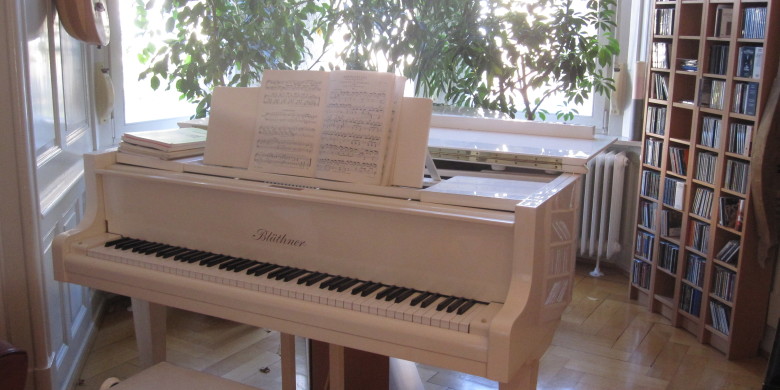Origin of the Ω-Method©
After suffering severe wrist injuries in a car accident, I had my rehabilitation at The Hand Clinic, Windsor, where a beautiful grand piano was sitting in a lecture hall. Not able to play AT ALL - I had to re-learn to "walk" on the keyboard, and discover the piano anew.
Through careful introspection, hightening my awareness on my hand and observing what my uninjured hand was doing, 49 exercises emerged, which encompassed all aspects of movement on the piano without endangering the results of the surgery or putting any unphysiological stress onto the wrist.
It took only three weeks from not being able to play one note to playing a full-length piano recital at the clinic.
Pedagogic analysis and scientific evaluation of the Ω-Method
After my own successful rehabilitation with the Ω-Method, I graduated as a double-major in piano performance and piano education with honors.
In my diploma thesis, I investigated the development of a physiological piano technique, based on historically grown movement concepts and their applications. This was the foundation of my scientific interest regarding all aspects of piano technique.
My Ph.D.-project was designed to use movement analysis tools (3-D-Kinematogaphy, FA Zebris) to evaluate and objectivate the principles of the Ω-Method© and it's underlying principles of learning psychology, anatomy and physiology. The thesis (Summa cum laude) has been published with Schott Music.
Therapeutic use of the Ω-Method©
Since almost 20 years, the Ω-Method© has been used in the optimization of playing mechanics and piano technique - mostly in the rehabilitation of professional pianists.
The method is a pedagogic tool to develop a balance between extrinsic and intrinsic hand muscles, to strengthen the intrinsics (Mm. lumbricales and interossei) and to optimize the fine-tuning involved in playing most intricate passages and nuances.
I could rehabilitate a large number of pianists in helping them develop an optimized hand function and thus, to reach their musical goals with more ease.
Adaptation of th Ω-Method© to other instruments
During my educational and therapeutical practice, it has become evident that the principles of the Ω-Method© can be applied to musical learning processes in general - and therefore also to different intruments than the piano. Those principles encompass the learning of musical structure, the planning, execution and control of movement, the application of principles from training sciences and therapy etc.- those are similar in instrumentalists, but they need small adaptations for each instrument.
Die Ω-Method© has been used successfully by a multitude of musicians with a wide range of instruments.
